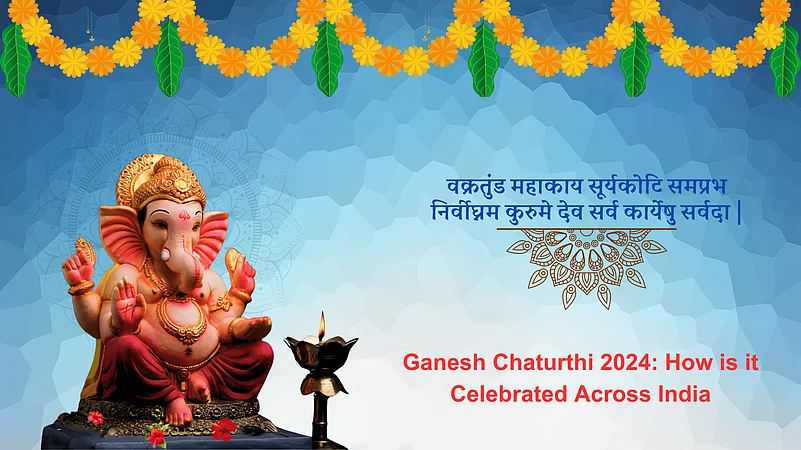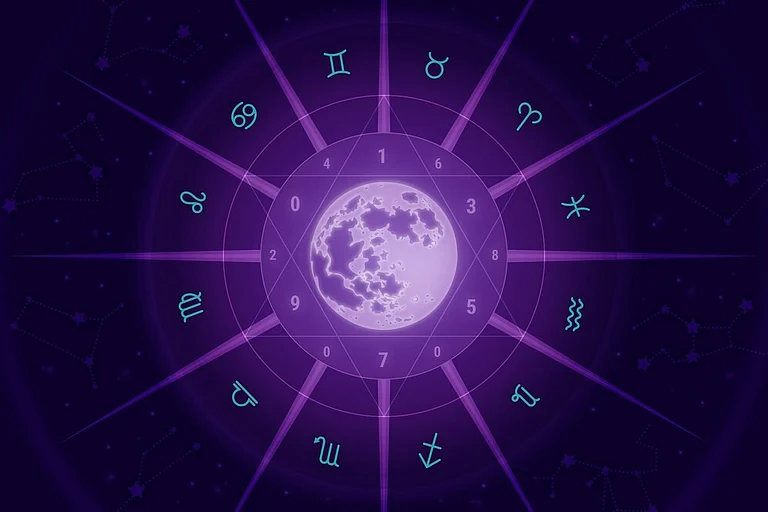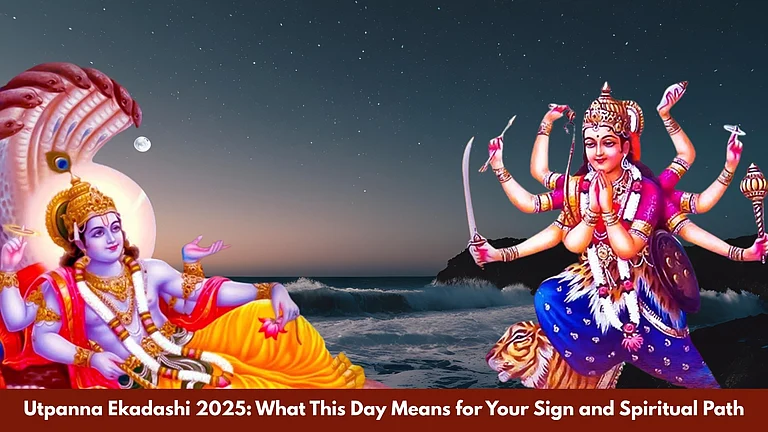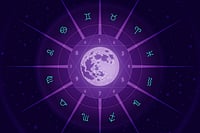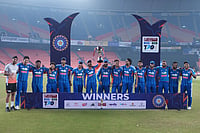One of India's most loved and well-known festivals is Ganesh Chaturthi, which is also called Vinayak Chaturthi. Lord Ganesha, the God of wealth and wisdom, was born on this day. This festival is usually celebrated around every year in August or September and it continues for ten days. At the time of this festival, the entire country comes alive with vibrant decorations, traditional music, and the alluring aroma of delicious sweets.
Ganesh Chaturthi is celebrated with a lot of emotion all over India. The emotion that you experience all over the world that you never forget. Basically in India, Ganesh Chaturthi is celebrated at a large scale in the states of Madhya Pradesh, Maharashtra, Gujarat, Goa, Karnataka, Kerala, Andhra Pradesh, Telangana, and Tamil Nadu. As the zones are different, there are slight changes in the way of worshipping or celebrating this festival.
If we look closely into the mode of celebration, we find two stark differences in the way Ganesh Chaturthi is celebrated at home and in public. In Maharashtra, it seems like every family is celebrating their type of Ganesh Chaturthi. Each state is identified with some sort of a festival and Maharashtra is famous for its Ganeshotsav.
Ganesh Chaturthi is celebrated in the following ways in different states:
1. Maharashtra:
During Ganesh Chaturthi, Mumbai, the city of dreams, transforms into a cultural hotspot. Mumbai just takes Ganesh Chaturthi celebrations to a whole new level. The city's fervour and enthusiasm during this festival are unparalleled. Thousands of beautifully crafted idols of Lord Ganesha are installed in homes and public pandals. Massive Ganesha idols, ornate decorations, and spectacular processions bring the city to life. The festival is a public affair, with thousands of people gathering at large pandals (temporary stages) to witness the installation of gigantic and elaborately decorated Ganesha idols. It sounds like the busy city of Mumbai is more alive at this time, with the loud bellows of Ganpati Bappa Morya and Mangal Murti Morya. Huge statues of Lord Ganesha are set up in flower-filled pandals all over the city. If you come here during this time, you will see how the city comes to life with bright colours as idols are put up in houses and at famous pandals. People all over the world know Mumbai and Pune for their lively and colourful processions, music, dance, and cultural shows. The holiday lasts for 10 days and ends with a big immersion procession called "Visarjan." During this event, devotees chant "Ganpati Bappa Morya," as they put the idols in bodies of water like the Arabian Sea. Millions of people visit famous Ganesha pandals every year, like Lalbaugcha Raja in Mumbai.
2. Karnataka:
In Karnataka, Ganesh Chaturthi, or ‘Ganesh Habba’, is celebrated with great devotion both at home and in public. Here, Ganesh Chaturthi is celebrated in a number of cultural and religious ways. At this point, the holiday starts a day early with prayers to Goddess Gauri, who is Lord Ganesh's mother. Then the Ganesh festival starts with a big party, and sweets like payasam, gojju, and modakam are made and given out. The festival is started with the installation of clay Ganesha idols and performing special pujas, bhajans (devotional songs), and aartis (rituals with lamps). Big, big public pandals are set up in places like Bengaluru and Mysuru to hold cultural events like plays, musical performances and a lot more. Modak, a sweet treat that is thought to be Lord Ganesha's favourite, is made and given to family and friends. Rituals from the past are very important, and the focus is on simplicity and dedication.
3. Goa:
In Goa, Ganesh Chaturthi, or ‘Chavath’, is an important festival celebrated with enthusiasm. The neighbouring state of Goa also celebrated Ganesh Chaturthi with a lot of fanfare, just like Maharashtra accomplished. As people get ready for the party, they clean their homes and visit family and friends during this event. Families gather to perform the installation of clay idols at home, which are often made locally. Goan celebrations include performing the ritualistic puja, singing aartis, and preparing delicious local sweets like ‘Nevri’ and ‘Patoleo’. In many Hindu homes in Goa, the holiday lasts for two days, and on the second day, the idol is immersed in one of the nearby rivers, wells, or lakes. Goan customs also include lively folk shows and dances, such as "Dashavatar," a type of theatre.
4. Tamil Nadu:
Ganesh Chaturthi is called "Vinayaka Chaturthi" in Tamil Nadu. People who worship Ganesha set up clay statues of him in their homes and in temples, especially the well-known "Pillayar" shrines that are dedicated to him. As part of the traditions, idols are decorated in a lot of detail, special prayers are said, and traditional sweets like "Kozhukattai" (which tastes like Modak) are given. As part of the celebration, early morning songs called Vinayaka Suprabhatam are chanted and stories about Ganesha are read. It is Gauri or Gowri Habba one day before Ganesh Habba or Ganesh Chaturthi in some South Indian states. Goddess Gauri, who is the mother of Lord Ganesha, is worshipped on this day. The celebration is based on the belief that a follower greets Goddess Gauri first, then Lord Ganesha the next day. Different religious talks and cultural programs are usually performed in Chennai and other places.
5. Andhra Pradesh and Telangana:
In the states of Andhra Pradesh and Telangana, the Ganesh Chaturthi is celebrated as 'Vinayaka Chavithi.' People worship Ganesha with clay statues at home and in several places. Lord Ganesha is worshipped by chanting special prayers, aartis, and bhajans. In Hyderabad, the festival is marked by big public art pieces. One of the largest and most famous Ganesh idols in the country is in Khairatabad. The immersion processions are huge on the last day, especially in Hyderabad. Thousands of followers are used to take part in the event and music, dance, and devotional songs play in the background.
6. West Bengal and Odisha:
Ganesh Chaturthi is marked with more and more zeal in West Bengal and Odisha, especially in cities. Ganesha idols are placed in homes, businesses, and classrooms as well as at the celebration. Pujas and cultural events follow the correct rites. In Odisha, the celebration is also connected to the start of the children's school year, which is supposed to provide them with knowledge and wisdom.
7. Gujarat:
Ganesh Chaturthi is a very important holiday in Gujarat, and most people enjoy it at home. Families put up idols and do traditions with treats like "Modak," sweets, fruits, and coconut as offerings. More and more people are celebrating in public in places like Ahmedabad and Surat. On the last day, there are big processions for immersion. There are decorations in the temples and special prayers are held.
When and why should you avoid Moon Sighting at the time of Ganesh Chaturthi?
Ganesh Chaturthi is a religious festival that commemorates the birth of Lord Ganesha. It is a propitious day that necessitates festivities, and followers exhibit great happiness after receiving clay figurines of Lord Ganesha at their residences. Today is the day that devotees of Lord Ganesha eagerly anticipate, as they await the opportunity to present Bappa with his preferred dish, modak, and demonstrate their hospitality. One thing, however, that people must not do on Ganesh Chaturthi is direct observation of the moon. Read on to learn the story related to this tradition of not gazing at the moon on Ganesh Chaturthi and what we need to do if anyone accidentally sees it.
When Should You Avoid Moon Sighting?
At the time of Ganesh Chaturthi, on the fourth day of the fortnight in the Bhadrapada month (August-September), it is highly recommended that devotees refrain from gazing at the moon. More specifically, it will be the best option to avoid watching the moon on Ganesh Chaturthi (Chaturthi Tithi) evening and the next day (Panchami Tithi).
The precise moment to avoid seeing the moon may differ based on the lunar calendar of the specific year. For reliable information, it is, therefore, best to reference the local almanac. For example, in 2024 Ganesh Chaturthi falls on September 7th, meaning that the moon will be invisible from September 7th evening till September 8th evening.
Why Should You Avoid Moon Sighting?
The idea that people can't see the moon around Ganesh Chaturthi comes from Hindu mythology, and it is said to be connected to an incident involving Lord Ganesha, the Moon (Chandra), and Lord Krishna.
A story says that one night, Lord Ganesha was riding his Mooshak back to his home. Chandra Dev, the Moon God, was the only one in the sky. As the Mooshak moved forward slowly while bearing Lord Ganesha, it saw a snake and ran back and forth. The Mooshak put Lord Ganesha on the ground to get away from the snake. And after seeing Lord Ganesha struggling to manage himself with his huge belly, the Moon God laughed at him and poked fun at his appearance. Lord Ganesha said that anyone who saw the moon would attract the Mithya Dosha, which means they could be wrongly accused of theft or a crime. This was meant to teach him a lesson. Once the Moon God realised he had angered Ganesha, he begged the Lord to forgive him. When Lord Ganesha saw that the Moon God changed his mind, he forgave him and told him that a threat that was spoken could not be taken back. However, its impact can be lessened. Therefore, he said that no one must look at the moon on the day of Ganesh Chaturthi to remember that arrogance shall lead to one's own downfall.
Owing to this curse, Hindus hold the belief that seeing the moon on Ganesh Chaturthi will result in the attainment of Mithya Dosha. This is a manifestation of ill fate in which an individual may encounter unfounded accusations or misinterpretations, either in their personal or professional spheres. As a precaution against such occurrences, followers refrain from gazing at the moon during this period.
Why do we do Ganesh Visarjan?
Ganesh Visarjan is the ceremony of submerging the idol of Lord Ganesha in water. It marks the end of the Ganesh Chaturthi event. In Hinduism, this practice has a lot of spiritual, cultural, and religious meaning.
1. Symbolic Significance:
Ganesh Visarjan is a symbol of how life is a circle of making things and breaking them down. It is believed that on Ganesh Chaturthi, Lord Ganesha, the god of wisdom and wealth, will visit the homes of his followers to bless them. By absorbing him, or visarjan, he is returning to his home in heaven. Visarjan tells us that life is short and that we should be disconnected.
2. Cleaning and Renewal:
Another perspective on the immersion process is that of a clean-up and fresh start. As the figure disintegrates in the water, all the negative things that have been piling up over time come to an end. To start again with spiritual development and inner serenity, people who follow the god are willing to give up everything they desire, their egos, and their ties to the god.
3. Environmental Message:
In the past, the clay statues of Lord Ganesha were meant to break down in water, returning to nature what it took away. This ritual demonstrates the Hindu concepts of "Prakriti," which means "nature," and "Purusha," which means "the divine soul." However, it is very much a positive message to everybody that using non-biodegradable materials for gods today has raised concerns about the environment, which has led to a push for actions that are better for the planet.
4. Community and Togetherness:
Ganesh Visarjan isn't just a holy act for one person; it's a celebration for everyone. It brings people together and helps them feel like they have a common cultural background. The procession to immerse the idol is marked by music, dance, and strong dedication, which brings everyone together and makes them happy.
5. Spiritual Lessons:
Ganesh Visarjan shows us how to let go, which is a spiritual lesson. The event starts with big celebrations and ends with a quiet farewell. In this example, we can see how important it is to understand that things are made, kept alive, and then broken down. It clarifies the concept of "Anitya" which means "impermanence". The concept of visarjan state is a reminder that all forms are temporary, but the divine spirit lasts forever.
The Ganesh Visarjan ritual is a significant Hindu ritual that symbolises numerous facets of Hindu philosophy. It teaches about the passing of life and death and how to let go, start over, and live in harmony with nature. This is an event that brings together the divine and the human, the person and society. In the end, it's also a strong spiritual reflection of life's deeper truths.
People all over India enjoy Ganesh Chaturthi in their own unique ways, which shows how diverse Indian culture is. People from all over the world come together for the holiday, whether it's in the busy streets of Mumbai or the quiet temples of Tamil Nadu. They all love Lord Ganesha.







